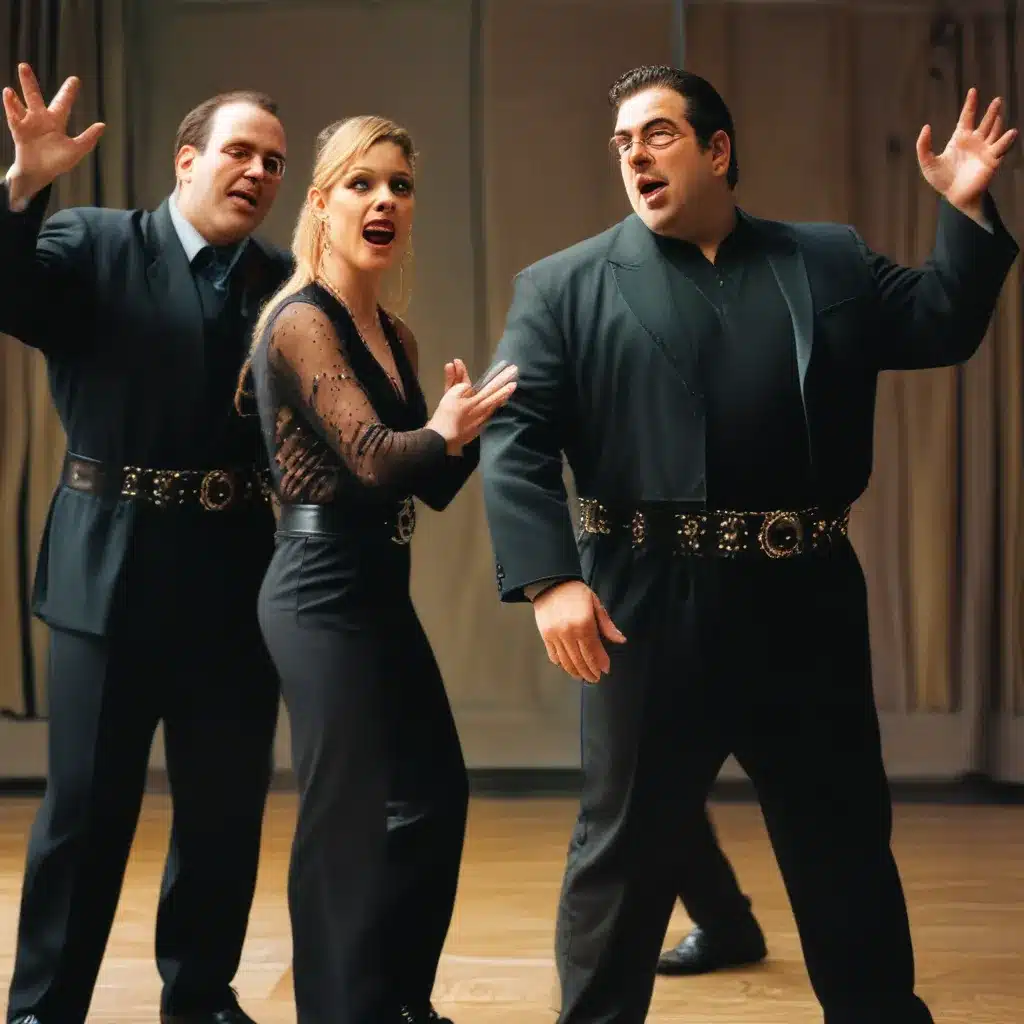
Hitting the High Notes: The Soprano’s Struggle
As a lifelong musical theater fanatic, I’ve seen more than my fair share of sopranos struggle with the dreaded high belt. It’s a pain point that has plagued many a talented vocalist, leaving them frustrated and their audiences underwhelmed. But fear not, my fellow musical thespians! I’m here to share the secrets of mastering that elusive high belt, straight from the mouths of the experts.
Let’s start with a harsh truth: not all sopranos are born with the ability to belt out those towering high notes. In fact, according to the National Association of Teachers of Singing, the female Broadway belt voice has evolved significantly over the years, with some voices naturally better suited to the task than others. But that doesn’t mean you’re doomed to a life of unfulfilled vocal dreams. With the right techniques and a whole lot of practice, any soprano can conquer the high belt.
Unlocking the High Belt: The Vocal Fach Breakdown
Now, before we dive into the nitty-gritty of mastering the high belt, let’s take a quick detour into the world of vocal classification. As Boris van Druff so eloquently explains, the categorization of voices in musical theater is a bit of a wild west compared to the more structured world of classical opera.
In the musical theater realm, we’ve got sopranos, mezzos, contraltos, tenors, baritones, and basses – all with their own unique quirks and challenges. And when it comes to the high belt, the soprano reigns supreme. But even within the soprano category, there are sub-types to consider: the coloratura, the lyric, and the dramatic.
The coloratura soprano, with her seemingly endless upper range, is often the go-to for those high-flying belt numbers. But don’t count out the lyric and dramatic sopranos just yet. With the right training and technique, they too can conquer the high belt and make it their own.
The Art of the High Belt: Technique, Technique, Technique
Alright, now that we’ve got the vocal classification out of the way, let’s dive into the real juicy stuff: the techniques for mastering the high belt.
First and foremost, according to Christianne Roll’s research, proper breath support is absolutely crucial. That means engaging the core, maintaining a tall, open posture, and controlling that airflow like a skilled puppeteer. Without a solid foundation of breath support, your high belt will fall flat faster than a lead balloon.
But breathwork is just the beginning. You’ve also got to get that tongue in check, literally. A free, relaxed tongue is essential for allowing the vocal folds to vibrate freely and produce that powerful, resonant belt. And don’t forget about vowel placement – the right placement can make all the difference in your ability to hit those high notes without straining.
And let’s not forget about the all-important mix. That seamless blend of chest and head voice is the holy grail of the high belt, allowing you to maintain that strong, supported sound all the way up the scale. It’s a delicate balance, to be sure, but with practice and patience, you can find that sweet spot.
The High Belt Hall of Fame: Inspiration from the Greats
Now, I know what you’re thinking: “But Meg, all this technical talk is making my head spin! How in the world am I supposed to put it all together and actually sound good?”
Fear not, my fellow sopranos, for you are not alone in this quest. Some of the greatest musical theater stars of all time have conquered the high belt, and we can learn a thing or two from their triumphs.
Take Kristin Chenoweth, for example. This powerhouse soprano has made a career out of belting her heart out, despite her classical training. “Kristin Chenoweth is the eternal example,” as Boris van Druff so aptly puts it, “of good classical training and vocal technique” meeting the demands of the modern musical theater stage.
And let’s not forget about the likes of Marin Mazzie, Sherie Rene Scott, and Audra McDonald – all sopranos who have proven that belting and high notes aren’t just for the lower voices. These women have made a name for themselves by seamlessly blending their classical chops with the power and energy of the Broadway belt.
So take heart, my fellow sopranos. If these legends could conquer the high belt, so can you. It’s all about finding the right techniques, honing your skills, and channeling the spirit of those who have come before you.
Putting it All Together: A Roadmap to High Belt Mastery
Alright, so you’ve got the technical know-how, and you’re inspired by the greats. Now, it’s time to put it all together and start your journey to high belt mastery.
First and foremost, don’t be afraid to seek out the guidance of a skilled vocal coach. The Musical Theater Center is a fantastic resource for finding instructors who can help you unlock your full vocal potential. They’ll work with you on everything from breath support to tongue placement to that all-important mix, tailoring their approach to your unique voice and goals.
And don’t forget about the importance of regular practice. Mastering the high belt is no easy feat, and it takes time, dedication, and a whole lot of sweat equity. Set aside time each day to work on your technique, whether it’s through vocal exercises, listening to recordings of the greats, or simply singing through your favorite high-belting numbers.
Remember, progress may not happen overnight, but with patience and perseverance, you’ll start to see those high notes come into focus. And when you finally nail that big, powerful belt, the feeling will be nothing short of exhilarating.
So, my fellow sopranos, what are you waiting for? Grab your sheet music, warm up those vocal cords, and let’s get to work on mastering the high belt. The stage is yours for the taking.

